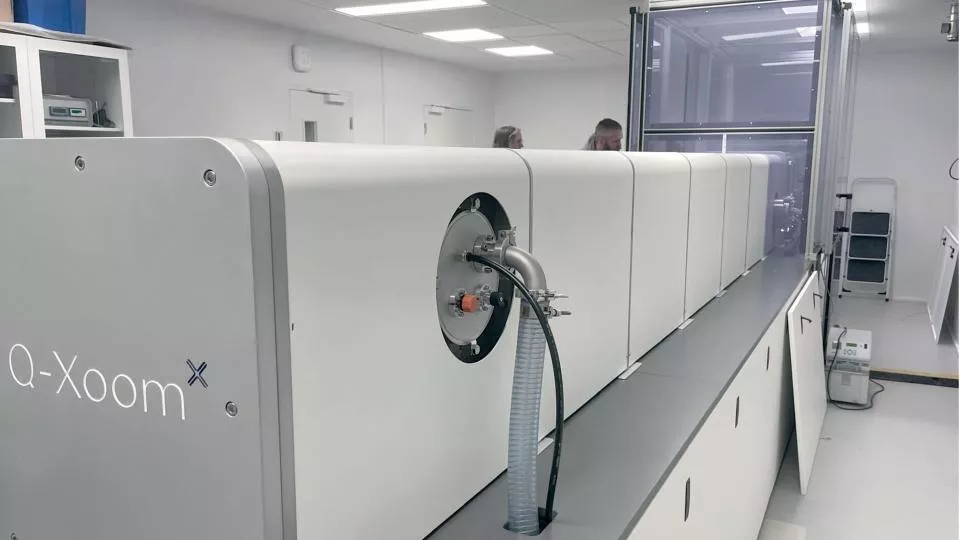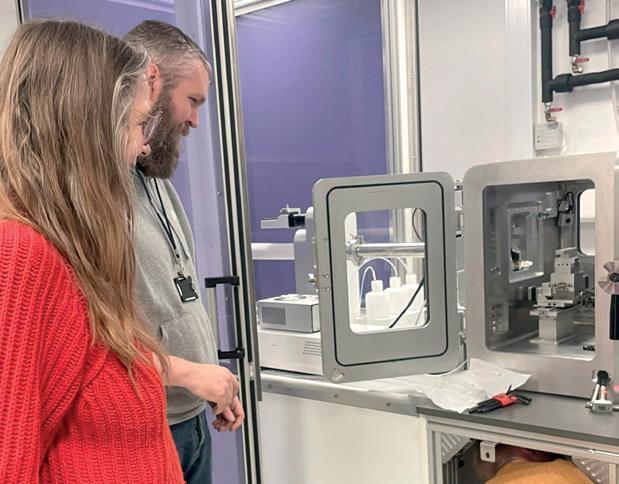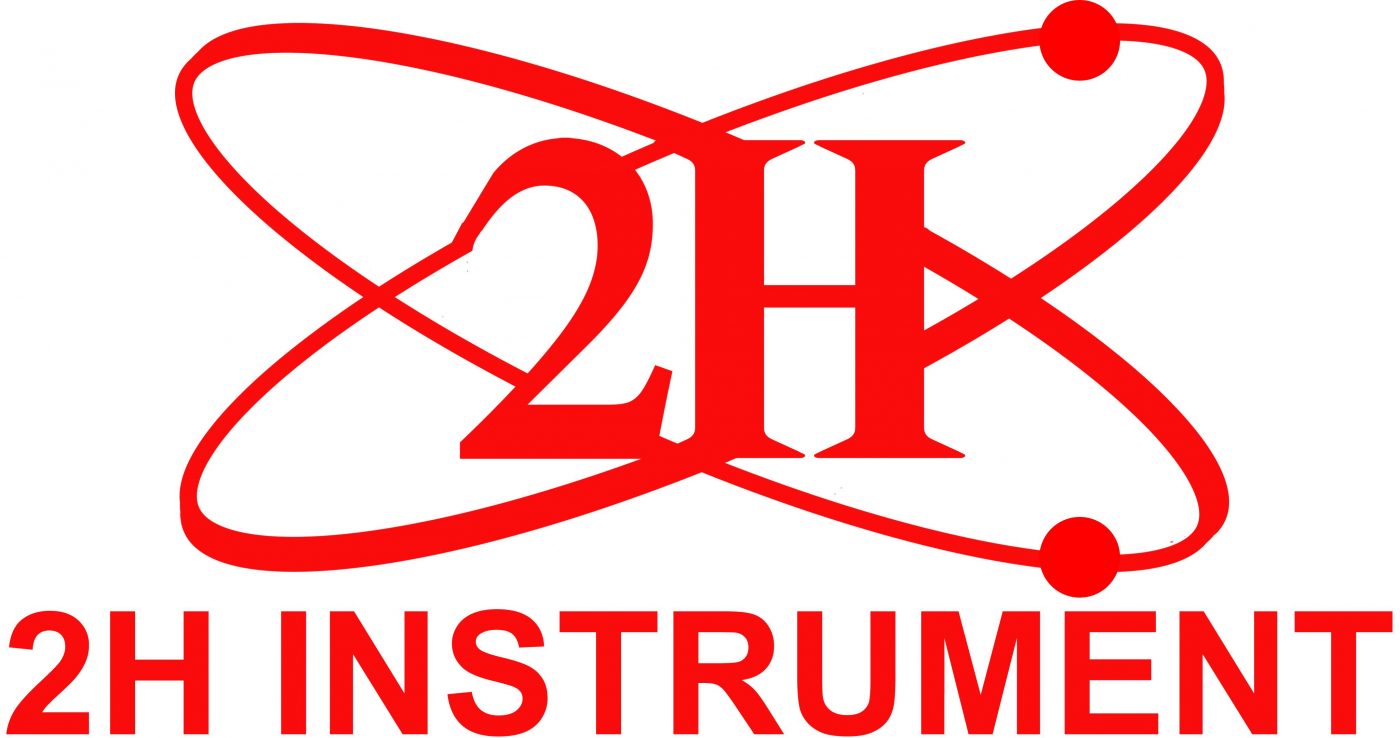Chưa có sản phẩm trong giỏ hàng.
Tin tức, Công nghệ & sản phẩm mới, Khoa học và đời sống
New X-ray facility boosts RUC’s materials research

Apparatus for measuring small-angle scattering of X-rays gives Danish material scientists new opportunities to analyze nanostructured surfaces.
A new machine has been moved into the basement under the physics laboratories and teaching rooms at Roskilde University (RUC). It arrived in mid-January, is shaped like an oblong box, is eight meters long and weighs two tonnes.
The giant monster is a new large X-ray facility called RUCSAXS, which will teach researchers about everything from how to make better sensors and nanotechnology components to packaging medicine that dissolves in a specific place in the body.
The X-ray system can tell how the nanostructure of materials changes over time, when, for example, the temperature changes or the material is deformed.
This is important knowledge for researchers such as Dorthe Posselt, who is associate professor of physics at the Department of Natural Sciences and Environment at RUC, and who shows the new X-ray system RUCSAXS (Roskilde University small-angle X-ray scattering) to the Engineer.
“RUCSAXS offers many opportunities, and I also expect to establish contact with various companies that can benefit from the facility on different levels,” she says.

It is Dorthe Posselt who, with a large multi-million dollar grant from the Novo Nordisk Foundation, got the facility for RUC and thus gave materials research at the university a big kick forward. To the delight of Dorthe Posselt herself and her closest physicist colleagues, RUC colleagues with other disciplines and researchers from other universities and industry.
RUCSAXS is to be used to investigate nanostructures by scattering X-rays at small angles around the direct beam from the X-ray source.
A ‘snapshot’ in 10 minutes
The way the X-rays are spread when sent through a material sample gives the researchers a detailed ‘snapshot’ of information about the nanostructure, where a ‘snapshot’ in this context is between 1 and 30 minutes, depending on the sample in question.
The researchers can, for example, follow how long chains of molecules, polymers, change over time when the material is affected in different ways.
The research may end up providing new methods to stabilize food, so that, for example, the expensive skin cream retains the right consistency when stored, or to produce small, efficient circuits for microchips.

Previously, Dorthe Posselt had to pack up her entire experimental set-up as well as parts of the apparatus for sample preparation to travel to synchrotron facilities in, for example, Germany or the USA when she had to examine her samples.
It was a demanding logistical task that took a lot of resources away from the research work, she says.
“You get three to five days of measurement time on a synchrotron, and we work 24 hours a day,” she says.
The very intense X-ray beam from a synchrotron makes it possible to record what happens to the material’s nanostructure every second or faster instead of every ten minutes as with RUCSAXS, which uses a smaller X-ray source (see fact box).
RUCSAXS vs. a Synchrotron
A Synchrotron produces much more intensive X-ray radiation by sending electrons around in a large ring at a speed close to that of light. Along the ring, there is room for many different experimental setups, including SAXS instruments.
She says that the limited time of a few days can be a challenge.
»Physicists typically place problems on a time scale and a length scale. And the time scale with which we can study things at RUCSAXS is slower than at a synchrotron. But the advantage is that we can study some things that you cannot at the synchrotron, where we would never have several weeks to study a material,’ says Dorthe Posselt.
In principle, the researchers can now insert a sample, measure it, take it out into a chamber which stores the samples at the investigated temperature and other relevant test conditions. Then wait 14 days to measure the material again.
Tailoring on a nanoscale
Dorthe Posselt has worked at RUC for over 25 years with issues related to the self-organization of various soft materials.
In recent years, her work has been concentrated on studies of thin films. More specifically, polymer coatings that consist of self-organizing ‘lego block’ molecules where chemically different polymers are linked together.
“When you know how to control the formation of patterns by asking the synthetic chemists who produce the polymers to slightly change, for example, the length of a single polymer in a building block, it almost feels like tailoring on a nanoscale,” says Dorthe Posselt.
Together with some Hungarian biochemists, Dorthe Posselt has been one of the first to use X-ray and neutron small-angle scattering techniques to study active, nanostructured biological systems in plant chloroplasts.
RUCSAXS provides a special opportunity to study nanostructured surfaces, which is important in several technological contexts. For example, in the manufacture of nanotechnology components or in the design of surfaces that make it difficult for bacteria to attach and grow.
Dorthe Posselt sees many opportunities to collaborate with chemistry and biology colleagues from Roskilde University’s Center for Frustrated Molecular Interactions (FRUSTMI), which she heads.
Important basic research
As a layperson, it may be difficult to understand why it is important to spend resources on studying the properties of synthetic and biological materials at the nanoscale.
But here Dorthe Posselt has a very simple explanation:
“You can’t make good wine from bad grapes. You have to know your materials. This applies both on a craft level, but also on a nanoscale,’ she says. Dorthe Posselt explains that it is an advantage that RUC has gathered all possible scientific competences within a geographically small area. This means that the laboratories that isolate and characterize the biological systems are close to Rucsaxs, which can measure them.
One of the first things Dorthe Posselt will do at RUCSAXS, together with her RUC colleague Pratik Shah, is to study self-organized nanostructures made up of DNA molecules.
Together with a Korean research group, Pratik Shah has discovered that a DNA molecule in contact with a certain metal-based nanomaterial can connect to other DNA molecules in ways that do not occur in nature.
By studying these DNA-based structures with RUCSAXS, the researchers hope to be able to control and understand structure formation. It can be used to develop nanomachines that can diagnose or perhaps even treat diseases inside the body, says Dorthe Posselt.
Source: https://ing.dk/artikel/nyt-roentgenanlaeg-saetter-skub-i-rucs-materialeforskning


